Remember a time when getting online meant waiting for a dial-up modem to screech its way to connection? It feels like a lifetime ago, doesn’t it? Today, we live in a world where we’re always on, always connected. Our phones, our smart watches, our cars, even our refrigerators are talking to each other and to the internet. This amazing level of connectivity has changed our lives in so many positive ways, making things faster, easier, and more convenient. But with all these connections comes a big, flashing red light: Cybersecurity.
Think of it like this: the more doors and windows you have in your house, the more ways there are for someone unwanted to get in. In the digital world, every new connection is like adding another door or window. And while we love the convenience, it also means that cybersecurity professionals, businesses, and even everyday folks like you and me are dealing with a whole new level of challenge. We’re not just protecting our computers anymore; we’re protecting an entire web of devices, data, and digital interactions.
This article will dive deep into how cybersecurity is adapting to and dealing with this ever-increasing connectivity, exploring the new risks and the smart solutions emerging to keep us safe in our digital lives.
Table of Contents
Key Highlights
- Connectivity Boom, Risk Bloom: The rise of IoT, cloud computing, and remote work has greatly expanded our digital world, but it has also created many new openings for cyberattacks.
- New Threats Emerge: We’re seeing more complex attacks like ransomware, supply chain attacks, and advanced phishing that target our interconnected systems and devices.
- Stronger Defenses Are Key: To stay safe, we need to adopt modern strategies like Zero Trust, better data protection, and continuous monitoring, moving beyond old ways of thinking.
- Everyone Has a Role: Cybersecurity isn’t just for tech experts; individuals and businesses alike need to be aware, follow best practices, and invest in robust security measures.
- The Future is Proactive: The battle against cyber threats requires constant learning, adaptation, and using new technologies like AI to predict and prevent attacks before they happen.
The Unstoppable March of Connectivity: What Does It Even Mean?
When I talk about “increased connectivity,” I’m not just talking about faster internet speeds (though those are part of it!). I’m talking about a fundamental shift in how we interact with technology and each other. It’s about a world where everything that can be connected, will be connected. Let’s break down some of the big players in this connectivity revolution:
The Internet of Things (IoT)
Imagine your coffee maker starting your brew when your alarm goes off, or your smart thermostat adjusting the temperature based on who’s home. That’s the IoT in action! It’s billions of physical devices around the world connected to the internet, all collecting and sharing data. From smart home gadgets and wearable tech to industrial sensors and connected cars, these devices are everywhere. They make our lives easier, but many of them weren’t built with strong security in mind. They can be easy targets for hackers looking for a way into your home or business network.
The Cloud Computing Revolution
Remember when all your files and programs lived on your computer’s hard drive? Now, more and more, they live “in the cloud.” This means they’re stored on powerful servers owned by companies like Amazon, Microsoft, or Google, and you can access them from anywhere with an internet connection. This flexibility is amazing for businesses and individuals, allowing for easy collaboration and access to powerful software without needing expensive hardware. However, it also means that our data is no longer just in one place; it’s spread across vast networks, making cloud security a critical concern. If you’re running a business, understanding cloud security best practices is absolutely essential.
Remote Work and Hybrid Models
The past few years have shown us that many jobs don’t require us to be in a physical office. Remote and hybrid work models have become the norm for millions. While this offers incredible flexibility, it also means that company data and systems are being accessed from home networks, coffee shops, and other less secure environments. Employees are using their personal devices, and the lines between work and personal life (and their associated security risks) have become blurred.
5G and Beyond
The rollout of 5G, the fifth generation of cellular technology, is supercharging connectivity. It offers incredibly fast speeds, very low delay (latency), and the ability to connect a massive number of devices at once. This isn’t just about faster phone downloads; it’s about enabling new technologies like self-driving cars, advanced telemedicine, and smart cities. While exciting, 5G’s massive capacity also means a larger attack surface for cybercriminals to exploit.
“The more interconnected our world becomes, the more vital it is that cybersecurity evolves from an afterthought to a foundational principle in every device, every network, and every interaction.”
The Expanding Attack Surface: More Doors, More Risks
With all this increased connectivity, the “attack surface” – basically, all the different points where an unauthorized user can try to enter or extract data from a system – has grown exponentially. It’s like our digital house just added dozens of new doors and windows, and some of them might even be hidden!
IoT Vulnerabilities: The Weakest Link
Many IoT devices are made for convenience and low cost, not strong security. They often come with default passwords that are never changed, or they might not get regular security updates. A hacker could potentially take over your smart camera, or worse, use a vulnerable smart light bulb as a stepping stone to get into your entire home network. For businesses, this means industrial sensors, smart HVAC systems, or connected medical devices could be entry points for devastating attacks.
Cloud Complexities: Who’s Responsible?
While cloud providers invest heavily in security, the shared responsibility model can be confusing. They secure the cloud itself, but you’re often responsible for securing your data and applications in the cloud. Misconfigurations, weak access controls, or simply not understanding how to properly secure your cloud environment can lead to serious data breaches. We’ve seen examples where even major companies have faced issues, like when Oracle confirmed a data breach in legacy cloud systems. It highlights that even with big names, vigilance is key.
Remote Work Risks: The Home Office Hazard
When employees work from home, they often connect from less secure Wi-Fi networks, use personal devices that might not have enterprise-grade security, and are more susceptible to phishing attempts. It’s harder for IT teams to monitor and control every endpoint, creating potential loopholes for cybercriminals. Phishing, especially tailored spear-phishing attempts, can be incredibly effective when people are less guarded in a home environment. This is why understanding topics like protecting your business from email compromise is more important than ever.
Supply Chain and Third-Party Risks
Our interconnected world means we rely on many other companies for services, software, and hardware. If one of those partners has a security weakness, it can directly impact us. This is known as a supply chain attack. For example, if a software vendor you use gets hacked, the malicious code could then be pushed to your systems through a legitimate software update. Understanding and managing third-party risk assessment is no longer optional; it’s a critical part of modern cybersecurity.
Data Privacy Concerns: Your Information, Everywhere
With so much data being collected, shared, and stored across various connected devices and cloud services, privacy becomes a huge concern. Who has access to your data? How is it being used? How is it being protected? Regulations like GDPR and CCPA are trying to address this, but the sheer volume of data and the ways it flows across networks make it a constant challenge to protect personal and sensitive information. This ties into broader discussions about social media privacy invasion and how our digital footprints are growing.
The Rise of Sophisticated Attacks
As our defenses get smarter, so do the attackers. We’re seeing more complex attacks:
- Ransomware 2.0: Not just encrypting data, but also stealing it and threatening to release it if the ransom isn’t paid.
- AI-Powered Attacks: Attackers using artificial intelligence to automate phishing campaigns, discover vulnerabilities, and even create polymorphic malware that constantly changes to evade detection.
- Nation-State Attacks: Highly sophisticated attacks sponsored by governments, often targeting critical infrastructure or intellectual property. Even specific sectors, like the aerospace industry, need to implement a strong aerospace cybersecurity strategy to defend against these threats.
Adapting to the New Normal: Cybersecurity Strategies for Connectivity
So, how are cybersecurity experts, businesses, and even individuals fighting back against this tidal wave of threats? It’s about moving beyond traditional “fortress” security models to more dynamic, adaptable approaches.
1. Embracing Zero Trust Architecture
Traditional security was like a castle: once you were inside the walls, you were trusted. In today’s interconnected world, that doesn’t work. Zero Trust means “never trust, always verify.” Every user, every device, every application – whether inside or outside the network – must be verified before being granted access to resources. This means:
- Strict Identity Verification: Multi-factor authentication (MFA) is a must.
- Least Privilege Access: Users only get access to what they absolutely need, nothing more.
- Continuous Monitoring: Constantly checking for suspicious activity.
2. Robust Endpoint Security and Management
With so many devices connecting to networks, securing each “endpoint” (laptops, phones, IoT devices) is crucial. This involves:
- Advanced Antivirus/Anti-Malware: Beyond signature-based detection, using behavioral analysis.
- Endpoint Detection and Response (EDR): Tools that monitor, detect, and respond to threats on endpoints in real-time.
- Patch Management: Regularly updating software and operating systems to fix known vulnerabilities.
3. Network Segmentation
Instead of one big network, businesses are breaking their networks into smaller, isolated segments. If a hacker gets into one segment, they can’t easily jump to another. This limits the damage an attack can cause. For example, your guest Wi-Fi should be completely separate from your business’s critical servers.
4. Data Protection and Encryption
Data is the new oil, and protecting it is paramount. This includes:
- Encryption: Scrambling data so only authorized parties can read it, both when it’s stored (at rest) and when it’s moving across networks (in transit).
- Data Loss Prevention (DLP): Tools that prevent sensitive information from leaving the network or being shared inappropriately.
- Data Backup and Recovery: Regular backups and a solid plan to restore data in case of an attack or disaster. To truly be prepared, you need to master your data protection strategy.
5. Employee Training and Awareness
Even the best technology can’t stop a human error. Employees are often the first line of defense, but also the most common target. Regular training on:
- Phishing identification: How to spot fake emails and malicious links.
- Strong password practices: Using unique, complex passwords and MFA.
- Safe browsing habits: Avoiding suspicious websites and downloads.
- Social engineering awareness: Understanding how attackers manipulate people.
“In a world where every device is a potential entry point, human awareness and vigilance become the ultimate firewall.”
6. Incident Response and Recovery Plans
No matter how good your defenses, breaches can happen. Having a clear, practiced incident response plan is vital. This includes:
- Detection: How quickly can you spot an attack?
- Containment: How do you stop the attack from spreading?
- Eradication: How do you remove the threat?
- Recovery: How do you restore systems and data?
- Post-Mortem: What lessons can be learned to prevent future attacks?
7. Leveraging AI and Machine Learning for Defense
Artificial intelligence (AI) and Machine Learning (ML) are becoming crucial tools in the cybersecurity arsenal. They can:
- Detect Anomalies: Spot unusual patterns in network traffic or user behavior that might indicate an attack, far faster than humans can.
- Automate Responses: Trigger automated actions to block threats or isolate affected systems.
- Predict Threats: Analyze vast amounts of threat intelligence data to anticipate future attack methods.
- Improve Efficiency: Free up security analysts from repetitive tasks, allowing them to focus on complex investigations. The impact of AI on the CISO role in 2025 is already being felt, changing how security leaders operate.
8. Continuous Monitoring and Threat Intelligence
Cybersecurity is not a “set it and forget it” task. It requires constant vigilance.
- Security Information and Event Management (SIEM) systems: Collect and analyze security data from across the network.
- Threat Intelligence Feeds: Stay updated on the latest threats, vulnerabilities, and attack techniques.
- Regular Audits and Penetration Testing: Proactively test your own systems for weaknesses before attackers do.
9. Focusing on Small Businesses Too!
It’s easy to think of cybersecurity as a big corporate problem, but small businesses are often even more vulnerable. They might not have dedicated IT staff or large budgets for security. However, they are just as much a target, if not more so, because attackers see them as easier prey. That’s why resources like a guide to cybersecurity for small businesses are incredibly important. Simple steps can make a huge difference for them.
The Road Ahead: Staying One Step Ahead
The digital landscape is always changing. New technologies emerge, new ways to connect appear, and with them, new risks. Cybersecurity is a continuous battle, not a destination. It requires constant learning, adaptation, and investment.
Key Trends to Watch:
- Quantum Computing: While still in its early stages, quantum computing could eventually break current encryption methods, requiring entirely new cryptographic approaches.
- Edge Computing: Processing data closer to where it’s collected (at the “edge” of the network) reduces latency but also creates new points of vulnerability that need securing.
- Regulatory Evolution: Governments worldwide will continue to introduce and update laws to address privacy, data protection, and cybersecurity, forcing businesses to adapt. Some of these are even considered top disruptive trends in cybersecurity.
- Cyber-Physical Systems (CPS): As IT and operational technology (OT) converge (think smart factories, critical infrastructure), securing these systems becomes paramount, as a cyberattack could have real-world physical consequences.
For me, the most important takeaway is that cybersecurity is no longer just about protecting computers; it’s about protecting our way of life. It’s about ensuring that the incredible benefits of increased connectivity aren’t overshadowed by the risks. It requires a collaborative effort from tech companies building secure products, businesses implementing strong defenses, and individuals practicing good cyber hygiene.
As we continue to build a more connected world, let’s remember that security isn’t a barrier to progress; it’s the foundation upon which true progress can be built. By understanding the challenges and embracing modern solutions, we can navigate the digital wild west safely and confidently. Stay curious, stay vigilant, and stay secure!
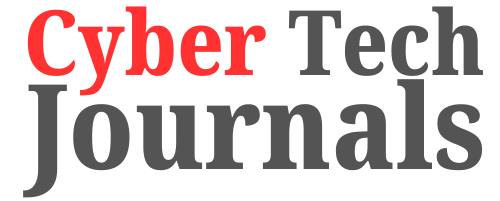



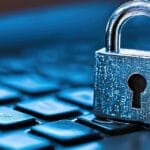


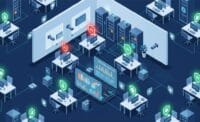
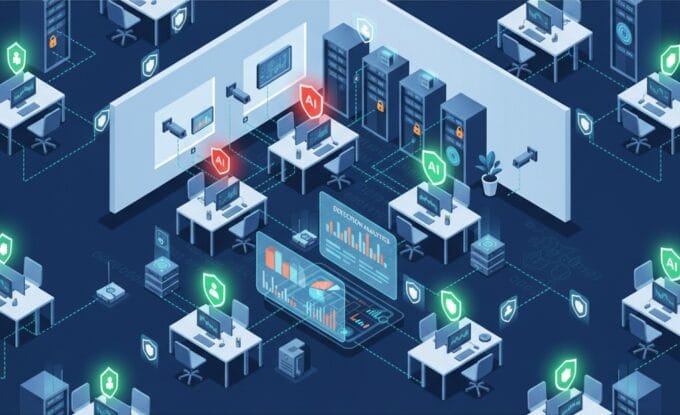

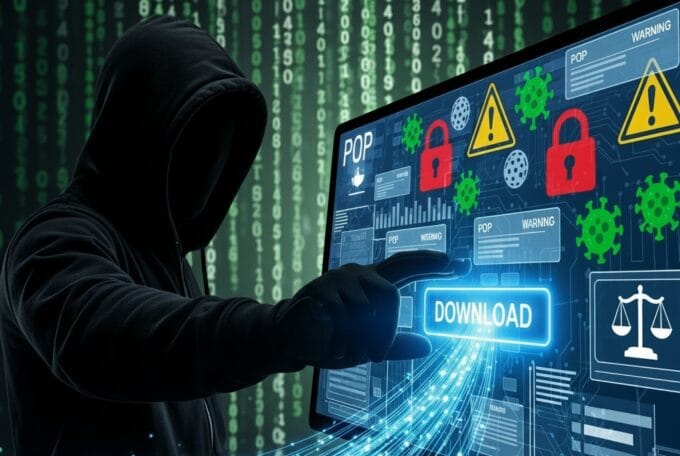


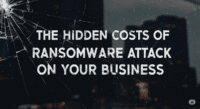


1 Comment